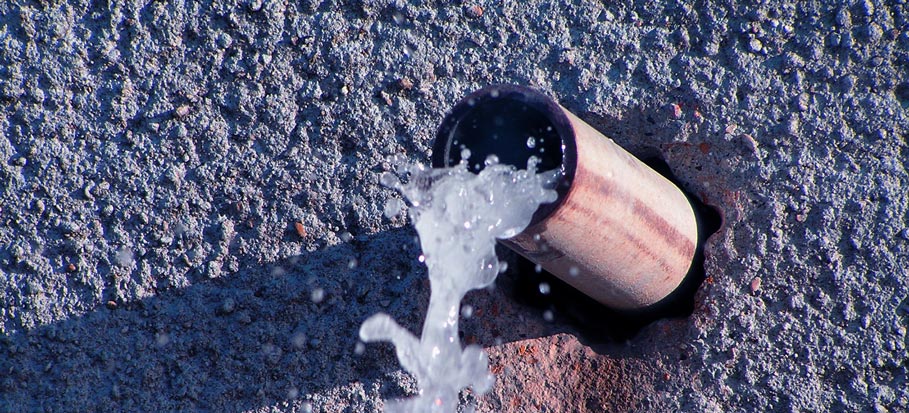Are you currently interested in information about Detecting hidden plumbing leaks?

Early discovery of leaking water lines can minimize a possible disaster. Some tiny water leakages may not be noticeable.
1. Check Out the Water Meter
Every house has a water meter. Inspecting it is a surefire way that aids you uncover leaks. For beginners, turn off all the water sources. Make sure nobody will certainly purge, use the faucet, shower, run the washing machine or dish washer. From there, most likely to the meter and also watch if it will certainly transform. Because no person is using it, there need to be no activities. That suggests a fast-moving leak if it moves. If you detect no changes, wait an hour or two and check back once again. This indicates you might have a sluggish leak that can also be below ground.
2. Inspect Water Usage
Examine your water costs and also track your water intake. As the one paying it, you need to see if there are any type of inconsistencies. If you spot sudden changes, despite your intake coinciding, it implies that you have leaks in your plumbing system. Remember, your water expense need to fall under the same range each month. An unexpected spike in your expense indicates a fast-moving leak.
A stable rise every month, also with the exact same behaviors, shows you have a slow-moving leak that's additionally slowly intensifying. Call a plumber to extensively check your property, particularly if you really feel a warm location on your floor with piping below.
3. Do a Food Coloring Test
30% comes from toilets when it comes to water usage. Test to see if they are running appropriately. Decline flecks of food color in the tank and also wait 10 minutes. There's a leak in between the storage tank and dish if the color in some way infiltrates your bowl during that time without flushing.
4. Asses Exterior Lines
Don't fail to remember to inspect your outside water lines too. Ought to water permeate out of the link, you have a loosened rubber gasket. One small leakage can throw away heaps of water as well as surge your water expense.
5. Evaluate and Examine the Scenario
House owners ought to make it a routine to inspect under the sink counters as well as even inside closets for any bad odor or mold growth. These two red flags show a leak so timely interest is needed. Doing routine evaluations, even bi-annually, can save you from a significant trouble.
Check for stainings and also damaging as a lot of appliances and also pipelines have a life expectations. If you think dripping water lines in your plumbing system, don't wait for it to rise.
Early discovery of dripping water lines can reduce a possible disaster. Some tiny water leakages may not be visible. Checking it is a guaranteed means that assists you find leakages. One small leakage can squander heaps of water and surge your water expense.
If you think dripping water lines in your plumbing system, don't wait for it to intensify.
WARNING SIGNS OF WATER LEAKAGE BEHIND THE WALL
PERSISTENT MUSTY ODORS
As water slowly drips from a leaky pipe inside the wall, flooring and sheetrock stay damp and develop an odor similar to wet cardboard. It generates a musty smell that can help you find hidden leaks.
MOLD IN UNUSUAL AREAS
Mold usually grows in wet areas like kitchens, baths and laundry rooms. If you spot the stuff on walls or baseboards in other rooms of the house, it’s a good indicator of undetected water leaks.
STAINS THAT GROW
When mold thrives around a leaky pipe, it sometimes takes hold on the inside surface of the affected wall. A growing stain on otherwise clean sheetrock is often your sign of a hidden plumbing problem.
PEELING OR BUBBLING WALLPAPER / PAINT
This clue is easy to miss in rooms that don’t get much use. When you see wallpaper separating along seams or paint bubbling or flaking off the wall, blame sheetrock that stays wet because of an undetected leak.
BUCKLED CEILINGS AND STAINED FLOORS
If ceilings or floors in bathrooms, kitchens or laundry areas develop structural problems, don’t rule out constant damp inside the walls. Wet sheetrock can affect adjacent framing, flooring and ceilings.
https://www.servicemasterbyzaba.com/blog/how-to-detect-water-leakage-in-walls/

Do you like reading up on Hacks to detect leaks? Create feedback down the page. We would be pleased to hear your suggestions about this blog posting. We hope to see you back again before long. Do you know about another individual who is very much interested in the subject? Do not hesitate to promote it. Thank you for going through it.
We value timeliness.